In the realm of industrial temperature sensing, the functionality and resilience of instrumentation under high vibration conditions are pivotal. Temp-Pro has been at the forefront of this technology, engineering High Vibration Resistance Temperature Detectors (RTDs) that are not merely instruments but pivotal components in complex systems. Our RTDs are designed to ensure precision and reliability under extreme conditions. Let’s dissect the technical aspects that elevate our high vibration RTDs above standard offerings.
Material Composition
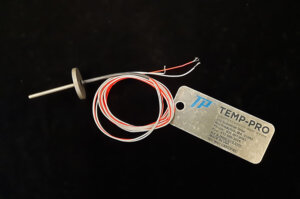 A critical aspect of our High Vibration RTDs is their construction from advanced materials optimized for both durability and sensitivity. The core sensing element is typically made from platinum, known for its stable resistance-temperature relationship and high melting point, making it ideal for a wide range of temperatures. This platinum resistance element is encased in a sheath composed of robust materials like stainless steel or Inconel, chosen for their ability to withstand high vibration and corrosive environments.
A critical aspect of our High Vibration RTDs is their construction from advanced materials optimized for both durability and sensitivity. The core sensing element is typically made from platinum, known for its stable resistance-temperature relationship and high melting point, making it ideal for a wide range of temperatures. This platinum resistance element is encased in a sheath composed of robust materials like stainless steel or Inconel, chosen for their ability to withstand high vibration and corrosive environments.
Operational Principles of High Vibration RTDs
The operational principle of these RTDs is grounded in the fundamental physics of electrical resistance and temperature correlation. As temperature increases, so does the electrical resistance of the platinum element. This change in resistance is meticulously measured and converted into temperature readings. The RTDs employ a Wheatstone bridge circuit, or similar configurations, to enhance the precision of these measurements. This allows for the detection of minute changes in resistance, translating to highly accurate temperature data. Advanced signal conditioning techniques are also used to mitigate noise and interference, ensuring that the readings are not only precise but also reliable under varying environmental conditions.
This combination of sophisticated materials and precision electrical measurement principles positions our High Vibration RTDs as the go-to choice for industries requiring accuracy and robustness in challenging conditions.
Enhanced Vibration Resistance and Structural Integrity
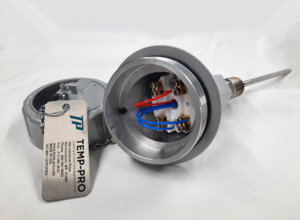 Our RTDs are meticulously engineered to withstand intense structural vibrations, a prevalent challenge in sectors like aerospace and renewable energy. The fabrication process involves the use of advanced, high-durability materials, which offer exceptional vibration resistance and minimal thermal expansion. These materials are selected for their ability to absorb and dissipate vibrational energy, thus reducing the impact on the sensor’s core.
Our RTDs are meticulously engineered to withstand intense structural vibrations, a prevalent challenge in sectors like aerospace and renewable energy. The fabrication process involves the use of advanced, high-durability materials, which offer exceptional vibration resistance and minimal thermal expansion. These materials are selected for their ability to absorb and dissipate vibrational energy, thus reducing the impact on the sensor’s core.
In terms of construction, we utilize state-of-the-art techniques like laser welding and precision fitting to ensure a robust assembly. The RTD elements are securely housed within a vibration-dampening matrix, which is designed to absorb and isolate the sensor from external mechanical stresses. This matrix is critical in preventing microphonic effects, where vibrations could be falsely interpreted as temperature fluctuations.
The design incorporates advanced damping mechanisms and anti-resonance structures. These are tailored to counteract specific vibrational frequencies encountered in aerospace applications, such as those caused by engine harmonics or aerodynamic forces, and in renewable energy systems, like wind turbine vibrations. By targeting these frequency ranges, the RTDs maintain their structural integrity and measurement accuracy.
Additionally, the RTD’s electrical circuitry is optimized for noise rejection and signal stability. We use shielded and twisted pair wiring to minimize electromagnetic interference and enhance signal integrity. The wiring is also routed in a manner that reduces the impact of mechanical stresses, further ensuring the accuracy and reliability of temperature measurements under high-vibration conditions.
Optimized Thermal Response Characteristics
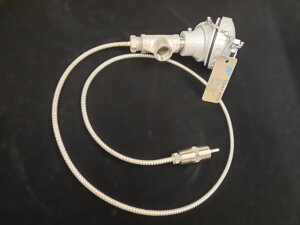 A pivotal feature of our RTDs is their exceptional responsiveness to temperature fluctuations, a critical factor in systems where swift and real-time data acquisition is imperative. This swift response is attained through a meticulously optimized sensor design, focusing on both the physical and electrical characteristics of the sensor.
A pivotal feature of our RTDs is their exceptional responsiveness to temperature fluctuations, a critical factor in systems where swift and real-time data acquisition is imperative. This swift response is attained through a meticulously optimized sensor design, focusing on both the physical and electrical characteristics of the sensor.
Firstly, the thermal mass of the sensor element is strategically minimized. By reducing the mass, the element can achieve thermal equilibrium with its environment more rapidly, thus responding to temperature changes more quickly. This is particularly vital in dynamic environments where temperatures can shift abruptly, such as in rapidly changing process control applications.
In addition to the reduced thermal mass, the RTDs feature enhanced heat transfer characteristics. This is achieved through the use of highly conductive materials, such as platinum and copper, in the sensor element and its immediate housing. These materials are selected for their excellent thermal conductivity, which facilitates a quicker transfer of heat to and from the sensor element.
Furthermore, the geometric design of the sensor element and its housing is optimized to maximize surface area exposure to the surrounding environment. This design ensures efficient heat transfer, enhancing the sensor’s ability to detect temperature changes swiftly.
Lastly, we implement sophisticated calibration techniques to ensure that the RTDs maintain their fast response characteristics over a wide range of operating temperatures. This calibration includes compensation for any non-linearities in the sensor’s response curve, ensuring that the RTD provides accurate and consistent readings even when temperature changes occur rapidly.
Broad-Spectrum Temperature Measurement Range
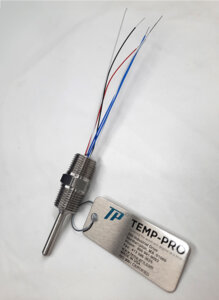 Our RTDs are precisely calibrated to operate efficiently across a sweeping temperature spectrum, ranging from the deep cryogenic temperatures, often as low as -200°C, to extreme high-temperature environments, reaching upwards of 600°C. This broad range capability is achieved through the integration of specialized sensing elements and advanced calibration methodologies.
Our RTDs are precisely calibrated to operate efficiently across a sweeping temperature spectrum, ranging from the deep cryogenic temperatures, often as low as -200°C, to extreme high-temperature environments, reaching upwards of 600°C. This broad range capability is achieved through the integration of specialized sensing elements and advanced calibration methodologies.
The materials chosen for these RTDs have exceptional stability and linear resistance-temperature relationship over a wide temperature range. Platinum’s predictable change in resistance with temperature allows for precise and accurate temperature readings across this extensive spectrum.
To ensure accuracy at these diverse temperature points, we employ a comprehensive calibration process. This process involves exposing the RTD to a series of controlled temperature environments, spanning the entire operational range. During calibration, the RTD’s resistance is measured and recorded at specific temperature points, establishing a resistance-temperature profile unique to each sensor.
Advanced calibration techniques, such as the use of high-accuracy reference thermometers and temperature baths with uniform temperature distribution, are utilized to ensure that the calibration process is as accurate and reproducible as possible. This meticulous calibration ensures that the RTDs maintain their accuracy even in the most challenging temperature environments.
Our RTDs are equipped with self-diagnostic capabilities, allowing them to perform periodic checks to ensure their calibration remains intact over time. This feature is crucial in applications where long-term stability and reliability are paramount, such as in chemical processing plants or in energy generation facilities, where consistent and accurate temperature measurement is vital for process control and safety.
Advanced Resistance Detection Mechanism
At the core of our RTDs is a complex and refined resistance temperature detection mechanism that is more advanced than standard thermocouples. This sophisticated mechanism hinges on the use of precision resistance elements.
The resistance element in an RTD operates on the principle that the electrical resistance of a metal changes predictably with temperature. In our RTDs, the platinum resistance element’s resistance increases linearly with temperature, a property known as a positive temperature coefficient (PTC). This linearity is crucial for precision temperature measurement and is a significant advantage over thermocouples, which typically exhibit a non-linear response.
To further enhance the accuracy and stability of our RTDs, we employ a carefully designed Wheatstone bridge circuit. This circuit configuration allows for precise measurement of the small changes in resistance associated with temperature fluctuations. The Wheatstone bridge, combined with high-precision, low-drift operational amplifiers and digital signal processing techniques, ensures that the RTD’s output is not only accurate but also stable over time and under varying environmental conditions.
Our RTDs are constructed with a focus on minimizing self-heating effects, a common issue where the sensor’s own electrical current can cause erroneous temperature readings. This is achieved by optimizing the sensor’s current levels and employing materials with high thermal conductivity to rapidly dissipate any generated heat.
The resistance elements in our RTDs are encapsulated in materials that provide optimal thermal contact with the environment while protecting the element from contamination and mechanical damage. This encapsulation is designed to ensure that the temperature of the resistance element closely matches the temperature of the environment being measured, further improving the accuracy and responsiveness of the sensor.
Customization for Industry-Specific Applications
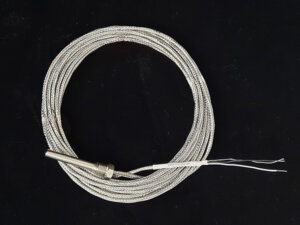 Recognizing the varied requirements across different industrial sectors, we offer customized RTD solutions. We engage in detailed consultations to understand specific operational demands, whether it’s for high-frequency environments in telecommunications or specialized temperature sensing in biomedical applications, ensuring our RTDs are precisely tailored for optimal performance.
Recognizing the varied requirements across different industrial sectors, we offer customized RTD solutions. We engage in detailed consultations to understand specific operational demands, whether it’s for high-frequency environments in telecommunications or specialized temperature sensing in biomedical applications, ensuring our RTDs are precisely tailored for optimal performance.
Integration with Real-Time Data Systems
In the modern industrial landscape, the integration of sensing technology with real-time data acquisition and control systems is not just beneficial but essential. Our RTDs are intricately designed to interface seamlessly with the latest control systems, ensuring the delivery of precise, real-time temperature data. This integration is pivotal for optimizing processes and maintaining control in environments where conditions are rapidly changing or where precision is critical.
Temp-Pro’s RTDs are constructed to withstand the electromagnetic interference (EMI) commonly found in industrial environments. This is achieved through the use of shielded cabling and proper grounding techniques, which are essential to preserve the integrity of the temperature data being transmitted.
Designed with scalability in mind, allowing for easy expansion and integration into larger or more complex control systems as the needs of the industrial process evolve. This scalability ensures that our RTDs remain a viable and flexible solution for a wide range of industrial applications, now and in the future.
In summary, Temp-Pro’s High Vibration RTDs represent a convergence of cutting-edge design, material science, and engineering, tailored for the most demanding industrial applications. They are a testament to our commitment to advancing the field of temperature measurement technology.
Explore the potential of these sophisticated sensors in enhancing the precision and reliability of our temperature measurement systems. For a deeper technical discussion or to explore how these RTDs can be integrated into your specific industrial processes, please contact us. Partner with Temp-Pro and experience the future of advanced temperature measurement technology.



